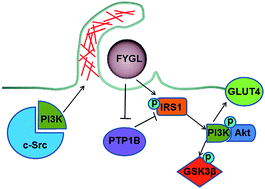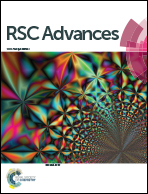Endocytosis mechanism of a novel proteoglycan, extracted from Ganoderma lucidum, in HepG2 cells
Abstract
A novel protein tyrosine phosphatase 1B (PTP1B) inhibitor, FYGL, extracted from Ganoderma lucidum, was first reported to have an efficient hypoglycemic effect and high safety in vivo in our previous study. However, the underlying mechanism of the anti-diabetes activity was still unclear. The dominant effective component of FYGL was demonstrated to be a neutral hyperbranched proteoglycan macromolecule. Therefore, it is necessary to first elucidate how the biomacromolecule works at the cellular level, in order to understand its possible functional mechanism in vivo. Herein, we focused on demonstrating the cell internalization and endocytosis mechanism of FYGL in HepG2 cells. A series of cellular uptake pathways was explored, including clathrin-mediated endocytosis, caveolae/lipid-mediated endocytosis, and macropinocytosis. Confocal laser scanning microscopy and flow cytometry were used to demonstrate the absorption of FYGL by HepG2 cells. Furthermore, pharmacologically selective inhibitors and Western blot methods were used to demonstrate that macropinocytosis mediated by c-Src/PI3K cascades was the preferred route for the uptake of FYGL in cells. Our study provided the basis of uptake of FYGL for an efficient hypoglycemic effect. The functional mechanism of the signaling pathway in vivo will be reported in the future.



 Please wait while we load your content...
Please wait while we load your content...